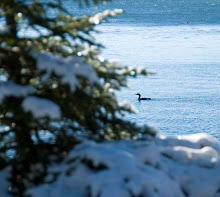But that was 18 years ago.
Today the Children's Ice Fishing Frenzy is just that -- a frenzy. A good one, though.
As in about 200 children spread among seven lakes in the Belgrade chain, experiencing a sporting activity that is quintessentially Maine.
"This activity really fits the Belgrade Lakes," Oakland Recreation Director Eric Seekins said. "I'm not sure you could do it in Portland, but it works for the Oakland Recreation Department. Originally, it was born out of my own interest in the outdoors and now, 18 years later, it's still rock 'n' rolling."
By Friday afternoon, the deadline to sign up, Seekins had nearly 200 children registered for what this year will be a Super Bowl Sunday event.
For most of its history, the Ice Fishing Frenzy was held on Messalonskee Lake alone.
Seekins added six more Belgrade Lakes -- Salmon, McGrath, North, Great, East and Long -- when he realized that many families had lodges or ice shacks on one of those ponds.
By expanding the venue, many families can stay warm fishing on their home ice.
"It makes it easier for the families with young children," Seekins said.
Participants can start fishing any time they wish, but they have to bring their fish to Atwood Elementary School to be weighed between 3 and 5 p.m.
Prizes are awarded in the following fish categories: white perch, yellow perch, pickerel, smallmouth bass, largemouth bass, black crappie, brown trout, splake, brook trout and northern pike.
And then there are the prizes for pre-determined mystery weights, as well as prizes through special drawings and a special prize for the largest fish.
No child, moreover, leaves without receiving a certificate of participation.
"Everybody," Seekins said, "will walk out of there with something on Sunday. All they have to do is show up at the school."
Seekins will be among the participants or, rather, he will be on a lake watching his children, ages 7 and 4, try to hook a big one.
It's important, he said, to let your children learn what ice fishing is all about.
"If (ice fishing) is not passed on to the next generation," he said, "we are going to lose it, and this is a nice, friendly way do to it."




